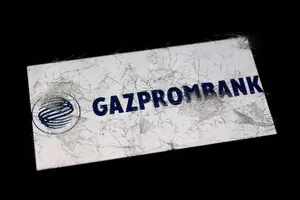How Russian Oil Tankers Circumnavigate Sanctions

Russia's invasion of Ukraine and energy sanctions imposed by the G7 and the European Union have led to a drastic restructuring of Russian oil logistics. To minimize losses from the restrictions, Moscow has created a “shadow fleet”, a network of tankers formally registered in third jurisdictions with dubious insurance. According to various estimates, by 2025 this fleet will number between 650 and 1,000 vessels. This is more than 17 percent of the world's oil tanker fleet, which accounts for up to 70 percent of Russian crude oil supplies by sea.
The 16th EU sanctions package and new sanctions from the UK
Against this background, the European Union has introduced the 16th package of restrictions. Another tanker vessel was added to the list of vessels prohibited from accessing ports and receiving a wide range of maritime transport services. This step is aimed at stopping the activities of those non-European tankers that are part of Putin's “shadow fleet” and help to circumvent the oil price ceiling and support Russia's energy sector, or are involved in the transportation of military equipment for Russia and stolen Ukrainian grain. In total, 153 vessels are already under EU sanctions.
At the same time, the UK introduced a new large-scale sanctions package against Russia, adding 40 more vessels to the list of sanctioned tankers. In total, 133 tankers are under the UK's sanctions. It should also be remembered that 183 shadow fleet tankers are also under US restrictive measures.
Resale of old tankers and “flags of convenience”
The basis of the “shadow fleet” is made up of used vessels that are massively resold to companies from the UAE, China, India and other countries that do not support sanctions. Since 2022, EU and US companies have sold more than 230 of these old tankers, which have become “golden” for Kremlin schemes. Many of these vessels are registered in Panama, Gabon, the Marshall Islands or the Cook Islands. The attractiveness of such “convenient” flags lies in the quick and easy registration procedure and minimal technical control, as well as in the formal disregard for information about the real beneficiaries.
Questionable insurance and complex ownership structure
Many “shadow” tankers refuse to use the services of the International Group of P&I Clubs, which covers most of the world's shipping and requires strict compliance with safety standards. Instead, they buy cheap policies from little-known companies from Russia, Gabon, or Cameroon, which in fact do not provide adequate coverage in the event of an accident. In addition, each tanker is usually owned by a shell company in an offshore location (UAE, Seychelles) and has a company name that matches the name of the vessel. This system of ownership makes it difficult to trace the persons involved and allows for a quick change of formal owners in the event of sanctions.
AIS and STS operations as the main circumvention tools
A popular practice is to hide or falsely display a ship's route through manipulation of its navigation systems (AIS). In this way, a tanker can “disappear” from radar or show a false location. This helps to avoid close monitoring, in particular during ship-to-ship (STS) operations, which involve the transfer of oil products between two ships on the high seas. According to Windward and the KSE Institute, from April 2023 to April 2024, more than 3,100 STS operations involving Russian tankers or “mixed” vessels, where at least one of the participants originates from Russia, were recorded.
Such operations usually take place outside of close monitoring. Until mid-2023, the most active STS location was the Laconian Gulf in Greece, but with the start of naval exercises, many Russian tankers moved to the islands of Lesvos and Chios (Aegean Sea), the coast of Malta (Hurd's Bank), Malaysia, the Red Sea and the port of Augusta (Sicily). In each of these regions, oil and oil products have been detected, sometimes with the deliberate disabling of AIS to conceal the true route or quantity of cargo.
Specific examples of transfers and fictitious certificates
There are many cases when “shadow” vessels carry out STS with Russian tankers, and then “clean” carriers sell the resulting volumes of oil on much more favorable terms. For example, in February 2024, the New Trust tanker (under the Liberian flag) near Constanta received oil from a Russian vessel and subsequently transferred it to tankers with international (IG) insurance. In Malaysia (2023–2024), the Pioneer Sam repeatedly shipped mixed volumes of Iranian and Russian oil for storage at the A Jewel fleet storage facility. From there, the products were sent on to other vessels with fictitious shipping documents.
Why STS operations are key to circumventing sanctions
Mixing of oil products allows disguising the real origin of raw materials. Russian oil transshipped together with cargo from other countries acquires the status of “unknown origin”. This practice makes it easier to sell to markets where sanctions against the Russian energy sector have limited support. In addition, with AIS disabled, it is more difficult to trace where STS operations take place. Additional shell companies in the transportation chain distort the documentation and tracking of vessel movements.
Key players in the “shadow fleet”
One of the most prominent participants is Sun Ship Management (UAE), former Sovcomflot vessels transferred to Dubai-based companies, and Gatik Ship Management (India), which quickly “re-profiled” for Russian transportation in 2023 and subsequently re-registered vessels to a whole network of shell companies. The classic Seychelles Trust Company Complex address is also often used, where each registered company owns only one tanker. Chinese private brokers are also actively involved in the game, buying old and very large crude carriers (VLCCs) from Iran and Venezuela and using them to carry Russian oil.
Dangerous repercussions and risks for the international community
The shadow transportation system allows Russia to sell significant volumes of oil above the sanctions ceiling of $60 per barrel, and thus not achieve the full effect of the sanctions policy. According to KSE Institute estimates, in 2024, Russia could receive up to $9.4 billion in additional revenue. In addition to the economic benefits for Moscow, the situation is fraught with large-scale environmental risks: approximately 70 percent of the shadow fleet's vessels are over 15 years old and often have minimal maintenance. In 2023–2024, more than fifty accidents were recorded, including the explosion of the Pablo tanker off Malaysia and the collision of the Ceres I and Hafnia Nile, which could cause catastrophic oil spills.
International companies also face a real threat of reputational losses and secondary sanctions. Participation in the financing, insurance or maintenance of shadow vessels can lead to sanctions from the G7 or the EU.
How to counteract the “shadow fleet”
An effective fight against the “shadow fleet” requires a whole range of measures. It is necessary to expand the sanction lists of specific vessels, ban uncontrolled STS operations and require carriers to confirm reliable insurance when entering ports and territorial waters of the G7 and EU countries.
At the same time, monitoring of offshore firms and transactions for the purchase of used tankers should be strengthened to prevent the endless renewal of Russia's “shadow fleet.”
Only coordinated and decisive cooperation of all countries of the sanctions coalition can significantly reduce the scale of “dark” supplies and reduce the Kremlin's oil revenues, which continue to finance its aggression against Ukraine. The “shadow fleet” is already suffering from forced oil transfers and refusals of many buyer countries to accept sanctioned tankers. This is mainly due to the fact that Russian oil often outperforms Brent in price after transfers and ceases to be profitable for purchase. According to Reuters, this difference is $2–3 per barrel. Further coordinated sanctions pressure from key global players will be able to neutralize the effectiveness of the “shadow fleet” completely.
Please select it with the mouse and press Ctrl+Enter or Submit a bug















 Login with Google
Login with Google